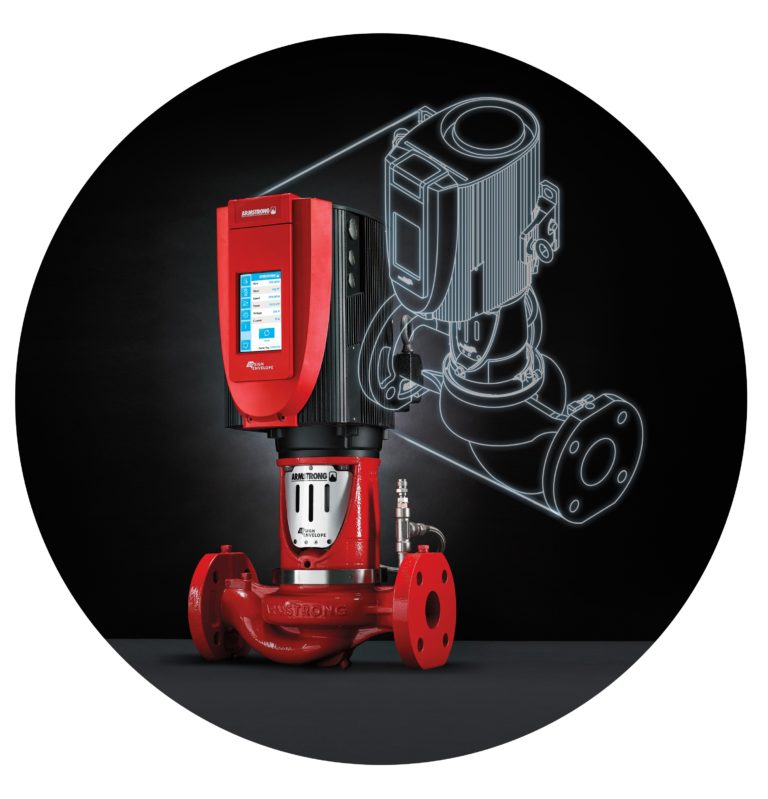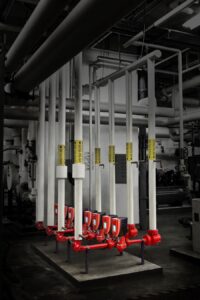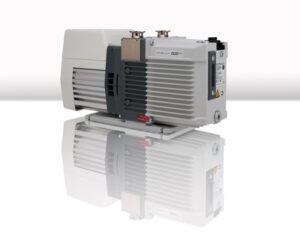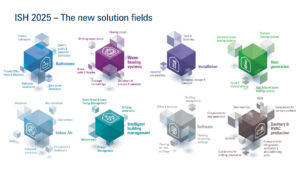Armstrong Fluid Technology Announces Partnership with Hysopt

Armstrong Fluid Technology digital twinning partnership. (Image source: Armstrong Fluid Technology)
Bringing together Armstrong’s extensive experience of installations worldwide, and Hysopt’s powerful technology, the new partnership will provide customers with more robust scientific simulation and verification of HVAC system energy and carbon savings than ever before.
Stephen Hart, spokesperson for Armstrong Fluid Technology explained: “Reliable information on the potential for improving energy efficiency of HVAC systems has never been more crucial. World events have brought a new sense of urgency. There are various ways of calculating potential energy savings of different HVAC system designs but, up until now, these have always lacked fast, independent calculation and verification within a strong scientific framework. Designers of systems and building owners have always had to take a lot of information on trust, and that didn’t go far enough. When you are designing a system or planning an energy upgrade, you need to be able to compare different scenarios rapidly and accurately, but ordinary computer modelling simply hasn’t been powerful enough. Hysopt’s digital twinning technology changes all that.”
Digital twinning involves the creation of a virtual representation which can function as the real-time digital counterpart of a process. Practical application of this technology was pioneered by NASA to improve spacecraft design, and the first physical-model simulation was announced in 2010. Since then digital twinning has been introduced in a number of other technology sectors to continually improve product design and development.
In the HVAC sector, Armstrong Fluid Technology is leading the way and, in partnership with Hysopt, the company will now be able to offer customers advanced digital twinning simulations of potential HVAC systems designs. Launched in 2013, Hydronic System Optimisation (better known as Hysopt) was established by Roel Vandenbulcke (CEO) as a technology spin-off from the University of Antwerp. In addition to the usual data such as room dimensions and building load, Hysopt’s Hydraulic System Support technology creates simulations employing far more operational characteristics than before, from anticipated temperature, pressure and flow throughout the hours of the day, to the specific weather-related data for the specific location across the entire year. Extremely detailed calculations of system operation, energy consumption and carbon savings can therefore be created. The technology is also powerful enough to allow alternative scenarios to be compared, by replacing key system components. For example, a system designer can rapidly receive a quantified report on the impact of introducing heat pumps, or replacing a specific pump model, with actual calculations of the resulting savings in energy consumption, energy costs and carbon reductions provided by the technology in minutes. Using these insights the simulation also calculates the payback period and return on investment. After installation of new or upgraded systems, the performance and resulting savings can be verified/proven using the same digital twinning technology.
Stephen Hart continued: “Leveraging cloud computing makes it possible to carry out calculations that were never possible using traditional computer simulations. At last, important technical and financial decisions can be analysed comprehensively in advance, and based on a firm scientific basis.”







